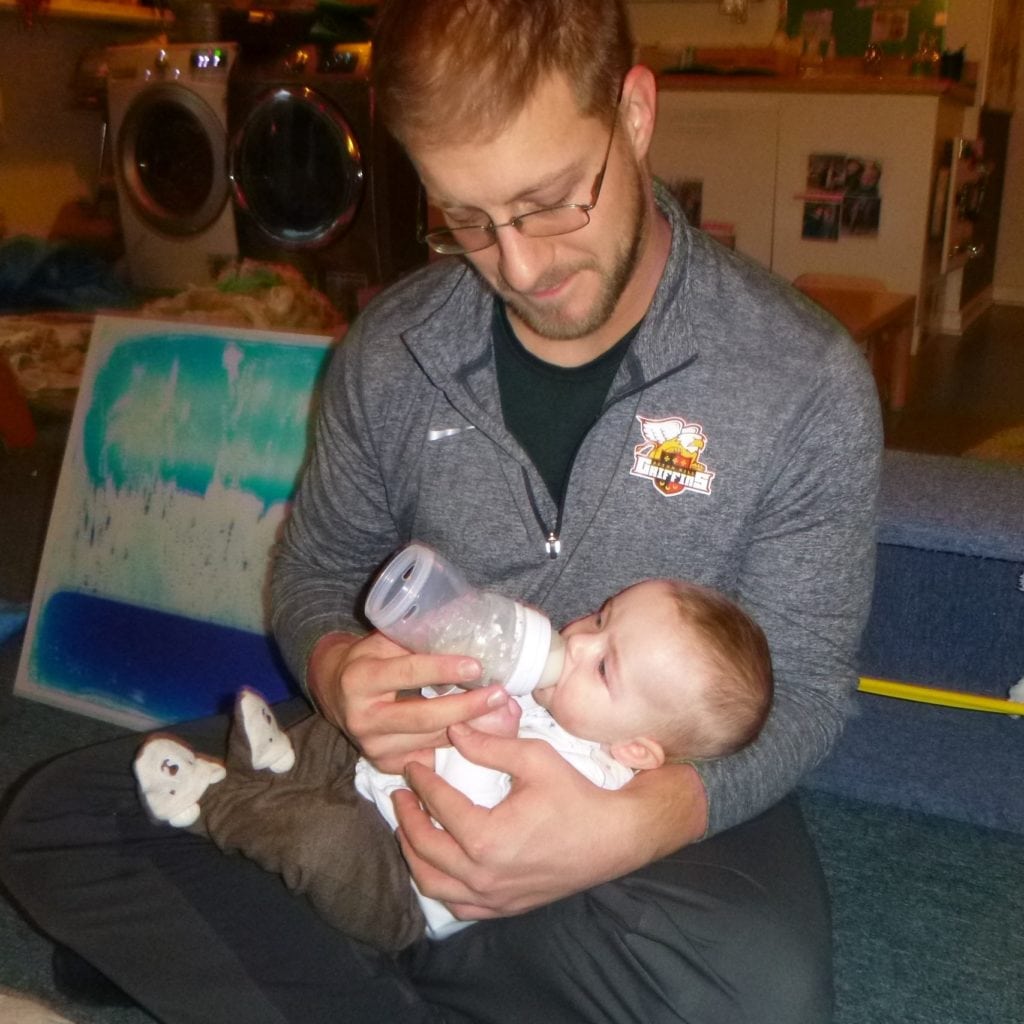Helping Your Infant Accept a Bottle

There are many bottles and nipples available. Many parents have different bottle preferences and each bottle has many claims. We do not have a bottle preference. Many different bottles work for children. We do recommend always using the same bottle and nipple when possible. If you frequently switch the type of bottles or nipples, children may become confused and refuse all bottles.
We recommend starting with a slow flow nipple or a size one. When your child is around 4-6 months, shows frustration with the bottle, or if they are taking more than 40 minutes to drink their bottle, we recommend moving to a medium flow or size two nipple. We do not recommend moving to a fast flow or size three nipple until children are 9 months and/or have stopped chest feeding. Because fast flow nipples are very easy to suck, young infants may no longer chest feed if they are getting food with less effort from the bottle.
If your infant refuses the bottle:
It is very common for children that are exclusively breastfed to need time to transition to a bottle. Be patient.
Stick with One Bottle
If you have bought a set of bottles, it is best to stick with one type. While some families try different nipples until a child takes the bottle, we recommend sticking with a type and offering it multiple times. It is best to offer the bottle occasionally when your infant is young, two or three months of age, so they begin to understand they can get their food and cuddle time with a bottle just as they can when chest feeding.
Wait for Hunger Cues and Help Baby to be Calm
Offer the bottle when your child is hungry, but not overly hungry or upset. Show him the bottle and allow him to open his mouth. If he doesn’t open his mouth, touch it to his lip. If he does open his mouth, place the nipple inside, rubbing it along the top of his gums. If he sucks but then is surprised, try again. If this happens continually, the nipple may be too big. If the bottle is upsetting him, stop and help him calm. You can offer it again once he is calm. If you decide he is too hungry and chest feeding is an option, stop offering the bottle, help your baby calm, change physical locations, then offer the chest. It is best to not offer the chest when your child is upset so he doesn’t begin to make the relationship, “If something is bothering me I should eat.” or “If I don’t want the bottle and I cry then I can have the breast.” Just get calm first.
Be Patient, Calm, and Persistent
Keep trying. It can take weeks or even months for children to begin taking a bottle, but they can do it. Keep your patience and believe in yourself. Sometimes it is easier if mom is not available when you are trying the bottle because babies can smell their mother and will want the chest. The adult’s calm is crucial to a child being calm.
Moving to A Bigger Nipple
Help, I went to a bigger nipple and they are struggling. If your child is struggling with a bigger nipple, it may be too fast. If feedings are really slow and you want to go to a bigger nipple now, try helping your baby to eat in a more sitting position rather than lying in your arms. Hold the bottle parallel to the ground so there is less force pushing milk forward. If these tips don’t work, you may have to go back to the slower nipple for one to two weeks and try again.
Categories: Healthy Eating
Tags: Bottle Feeding, breast, Infant
